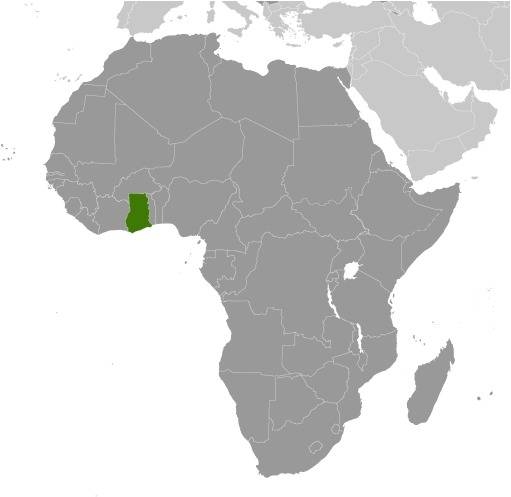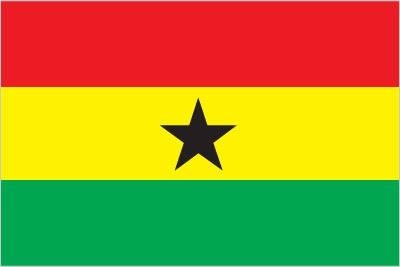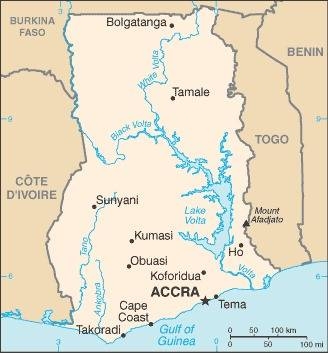Country Summary




Introduction
Background
Ghana in 1957 became the first Sub-Saharan country in colonial Africa to gain its independence. Ghana has a young age structure, with approximately 57% of the population under the age of 25.
Geography
Area
total: 238,533 sq km
land: 227,533 sq km
water: 11,000 sq km
Climate
tropical; warm and comparatively dry along southeast coast; hot and humid in southwest; hot and dry in north
Natural resources
gold, timber, industrial diamonds, bauxite, manganese, fish, rubber, hydropower, petroleum, silver, salt, limestone
People and Society
Population
33,107,275 (2022 est.)
Ethnic groups
Akan 45.7%, Mole-Dagbani 18.5%, Ewe 12.8%, Ga-Dangme 7.1%, Gurma 6.4%, Guan 3.2%, Grusi 2.7%, Mande 2%, other 1.6% (2021 est.)
Languages
Asante 16%, Ewe 14%, Fante 11.6%, Boron (Brong) 4.9%, Dagomba 4.4%, Dangme 4.2%, Dagarte (Dagaba) 3.9%, Kokomba 3.5%, Akyem 3.2%, Ga 3.1%, other 31.2% (2010 est.)
Religions
Christian 71.3% (Pentecostal/Charismatic 31.6%, Protestant 17.4%, Catholic 10%, other 12.3%), Muslim 19.9%, traditionalist 3.2%, other 4.5%, none 1.1% (2021 est.)
Population growth rate
2.23% (2022 est.)
Government
Government type
presidential republic
Capital
name: Accra
Executive branch
chief of state: President Nana Addo Dankwa AKUFO-ADDO (since 7 January 2017); Vice President Mahamudu BAWUMIA (since 7 January 2017); the president is both chief of state and head of government
head of government: President Nana Addo Dankwa AKUFO-ADDO (since 7 January 2017); Vice President Mahamudu BAWUMIA (since 7 January 2017)
Legislative branch
description: unicameral Parliament (275 seats; members directly elected in single-seat constituencies by simple majority vote to serve 4-year terms)
Economy
Economic overview
West African trade and agrarian economy; COVID-19 reversed nearly 4 decades of continuous growth; major diamond, gold, cocoa, and oil exporter; high public debts; financial and energy sector reform programs adding to fiscal pressures; high remittances
Real GDP (purchasing power parity)
$164.84 billion (2020 est.)
Real GDP per capita
$5,300 (2020 est.)
Agricultural products
cassava, yams, plantains, maize, oil palm fruit, taro, rice, cocoa, oranges, pineapples
Industries
mining, lumbering, light manufacturing, aluminum smelting, food processing, cement, small commercial ship building, petroleum
Exports
$25.59 billion (2019 est.)
Exports - partners
Switzerland 23%, India 17%, China 12%, United Arab Emirates 8%, South Africa 8% (2019)
Exports - commodities
gold, crude petroleum, cocoa products, manganese, cashews (2019)
Imports
$26.91 billion (2019 est.)
Imports - partners
China 24%, Nigeria 22%, United States 5% (2019)
Imports - commodities
metal tubing, ships, cars, refined petroleum, rice (2019)
Exchange rates
cedis (GHC) per US dollar -
Page last updated: Wednesday, May 11, 2022
